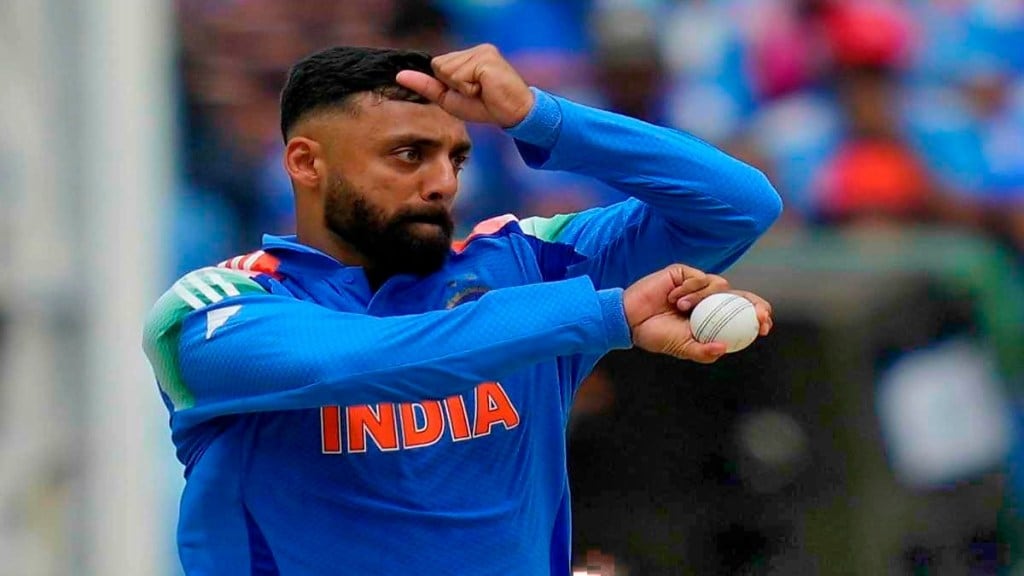In 2014, a Tamil movie called Jeeva hit the screens. It told the story of a young cricketer who was denied chances but fought his way back into the game. Among the extras in a cricket scene was a tall, wiry Varun Chakravarthy, barely noticeable to anyone watching. At that point, it was just a small acting role. He could not have imagined that a few years later he would end up living the same kind of struggle and comeback for real.
The architect who walked away
Varun kept wickets through his teenage years, hoping to rise through the junior ranks. But every trial ended the same way: disappointment. The rejections piled up, and with each season slipping by, the dream of making it big in cricket looked more distant.
Like most middle-class families, his parents pushed him toward stability. He enrolled in SRM University, studied architecture, and soon began designing buildings. Cricket seemed finished.
But it never really left him. Night-time tennis-ball matches drew him back, and in 2015 he decided to give it another try. He joined CromBest Cricket Club as a fast bowler. In only his second game, a knee injury closed that door. Many would have quit there. Varun chose spin instead.
Building spin from rubble
Spin was not something he mastered overnight. It was a craft he built slowly, piece by piece. Playing in fourth-division games for Jubilee CC gave him the freedom to experiment without pressure. He worked on grips, wrist positions, and angles until the ball started to dip and dart in ways that puzzled batters.
Once he turned to spin, he refused to stop at the basics. He tinkered with everything he could; googlies, sliders, flippers, even the old-fashioned zooter. His idea was simple: the more tricks he carried, the harder it would be for any batter to settle.
By 2018, years of work finally showed results. In the Tamil Nadu Premier League, playing for Siechem Madurai Panthers, his variations began to trouble experienced players. He was no longer a curiosity in club cricket. He was winning matches. When the Panthers lifted the trophy, the talk of a “mystery spinner” spread quickly across Tamil Nadu.
From jackpot to rock bottom
The 2019 IPL auction changed his life overnight. He entered at a modest base price of 20 lakh, but a bidding war pushed the number all the way up to 8.4 crore. For someone who had once scraped by as a freelancer, the figure felt unreal.
But cricket rarely gives without taking. His very first over in the IPL went for 25 runs, the worst debut over in the league’s history. For a man who had already walked away from the game once, it could have been crushing. Instead, he kept going.
A painful debut
His first outing with India, though, was nothing like a dream start. At the 2021 T20 World Cup in the UAE he went through three games without a wicket. Across his first six matches in the format he had only two to his name. The mystery seemed gone before it had even started.
That could have been the end of it. Varun refused to stop.
The Reinvention
Where others might have faded, Varun chose to rebuild again. With coach AC Prathiban, he shifted focus from sidespin to overspin, chasing bounce and dip rather than just turn. He spent hours watching footage of his own bowling, testing changes in domestic cricket until they began to work. Reinvention was no longer a choice. It was the only way forward.
When India recalled him in late 2024, Varun was already 33, making him the second-oldest man ever to debut in ODIs for India. At an age when most players think of slowing down, he was just getting started.
His T20I return was a storm. Across 14 matches, he claimed 33 wickets, striking once every nine deliveries. Two of those performances stood out: a five-for in Rajkot against England and another in Gqeberha against South Africa. Both spells showed that so-called mystery spin still had the power to dismantle the best batting orders.
The redemption arc
The true turning point came in the 2025 Champions Trophy. Cricket brought him back to Dubai, the same ground where three years earlier he had been written off. This time, in just his second ODI, he ripped through New Zealand’s batting with a five-wicket spell that gave India the win.
By the time the tournament ended, he was not only celebrating with the trophy in hand but had also finished as the joint second-highest wicket-taker of the entire competition, despite playing only three matches.
It was the kind of comeback that would sound too dramatic for a film. For Varun, it was simply the result of refusing to quit.
View from the summit
Now, in the Asia Cup, he has climbed to the top of the world rankings. His 1 for 4 against UAE was almost unplayable. His 1 for 24 against Pakistan showed his control under pressure. Those performances have made him the No.1 ranked T20 bowler, only the third Indian after Jasprit Bumrah and Ravi Bishnoi to reach that peak.
Varun Chakravarthy’s career has never followed a straight road. It has been full of wrong turns, injuries, and constant rebuilding. From wicketkeeper to architect, from fast bowler to spinner, from IPL reject to world number one, his story is less about mystery and more about persistence.
That tiny cameo in Jeeva once showed him as just another cricketer in the background. A decade later, he has lived the story for real, and this version; shaped by failure, sweat, and reinvention, is far more powerful than anything a film could ever capture.

